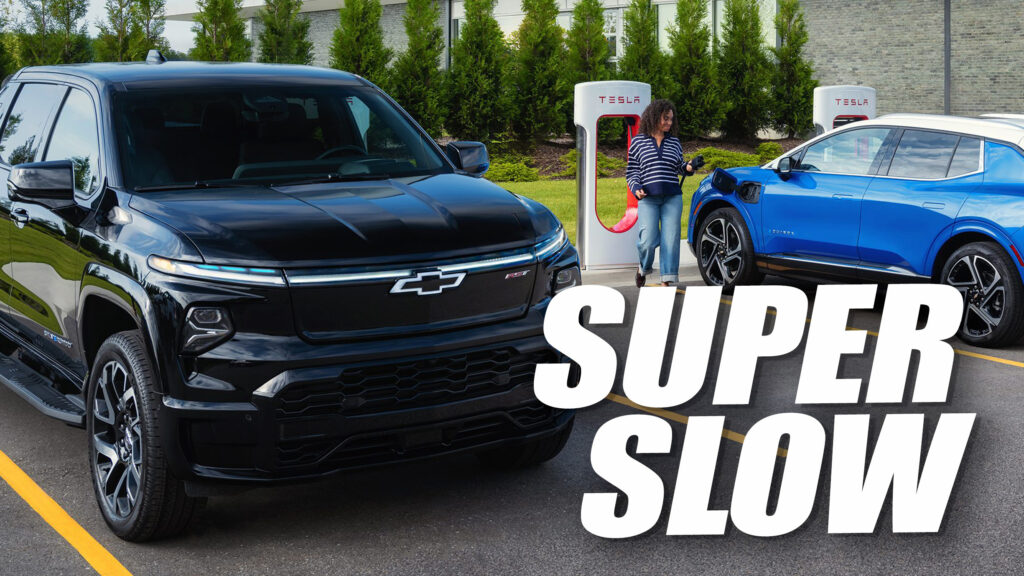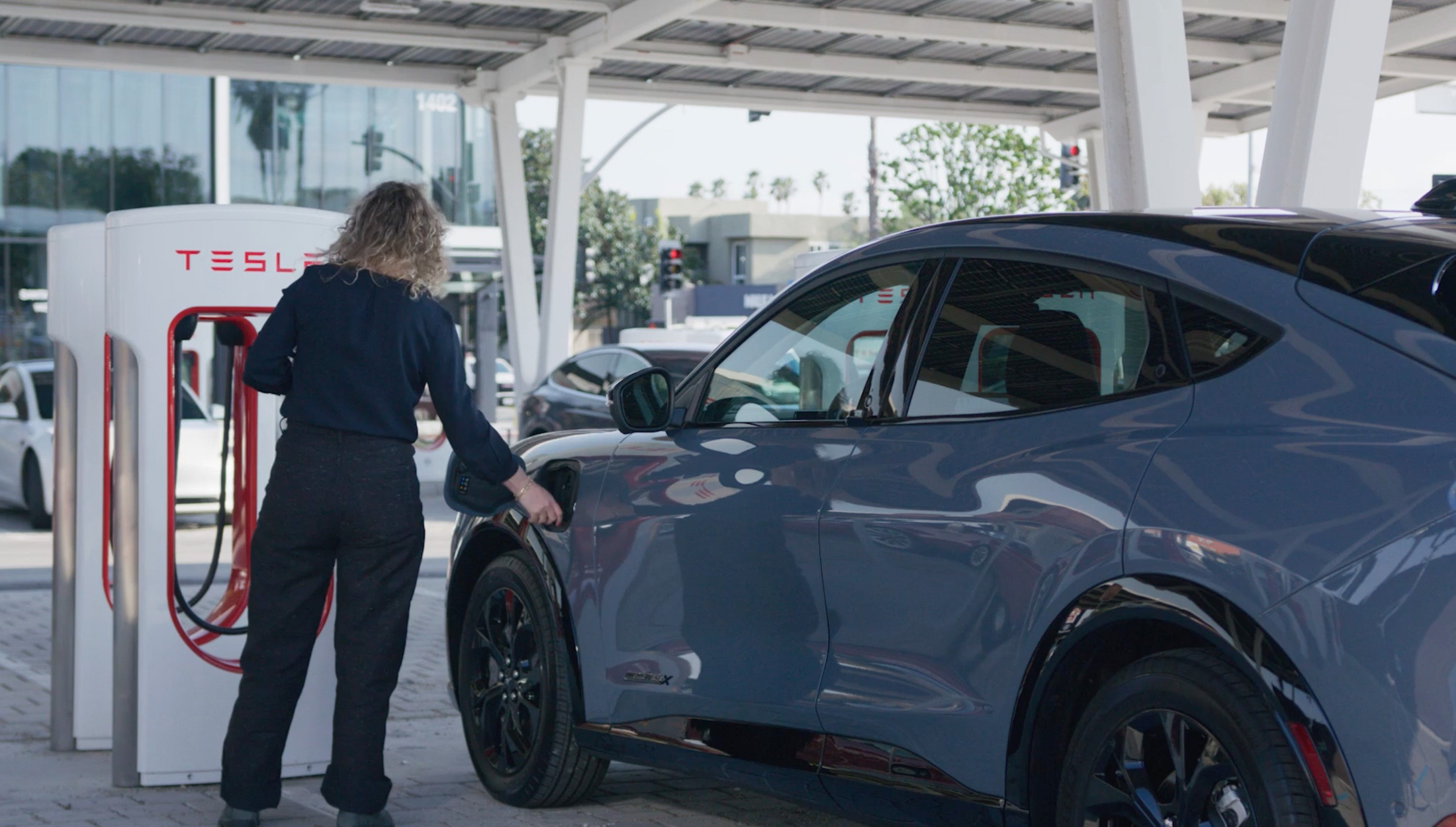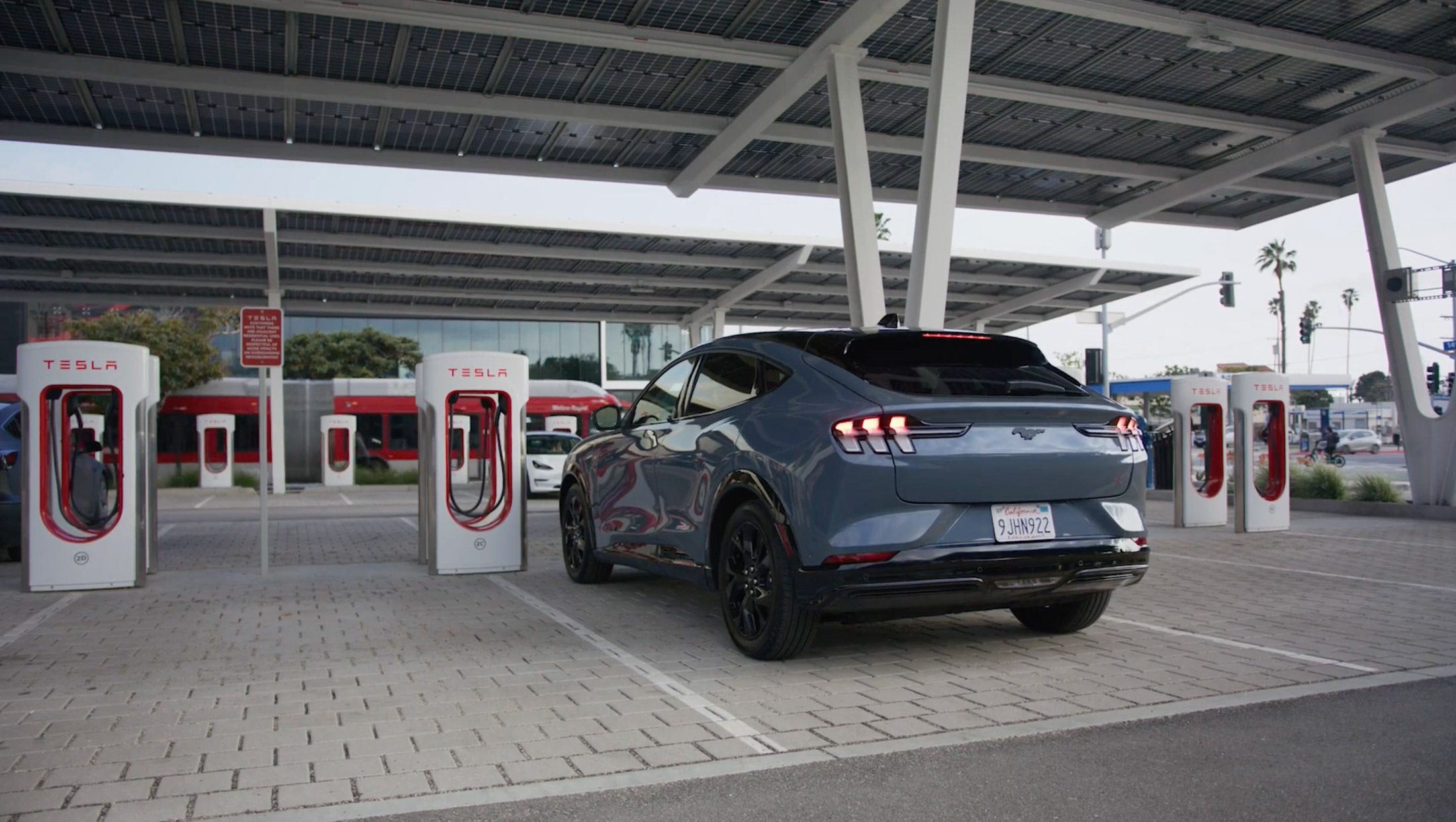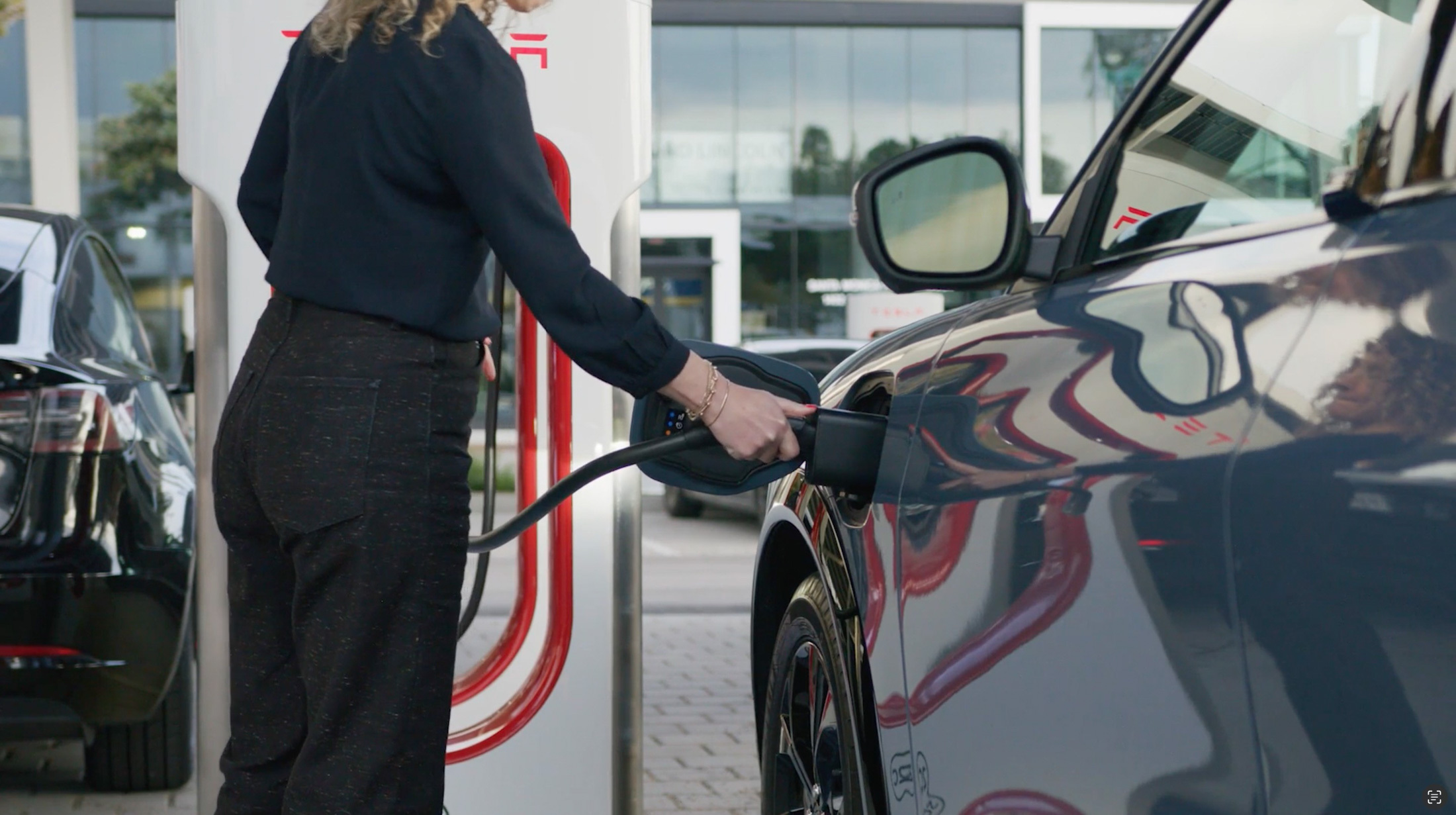- Only 100 of Tesla’s 2,500 US Superchargers have been reportedly adapted to make them usable by other brands’ EVs.
- Tesla has been slow to fit its chargers with the Magic Dock that allows cars without a Tesla port to juice up next to Model 3s and Ys.
- Some automakers offer adapters, enabling them to use Superchargers and many have pledged to switch to Tesla ports on EVs built from 2025.
Two years after Tesla promised to open up its charging network to other brands’ EVs, many of those non-Tesla electric cars are still unable to top-up at one of the instantly recognizable red and white Supercharger stations, according to a new report. Just 4 percent of chargers have had the necessary upgrade.
Tesla offered other automakers the opportunity to switch to its proprietary charging port design in 2022, a move that presented a significant engineering and manufacturing challenge for those other brands, but one they’ve now met. Many EVs sold in America from next year will have the new NACS (North American Charging Standard) port.
Related: GM EV Owners Get Tesla Supercharger Access, But There’s A $225 Catch
But soon after offering that initial olive branch, Tesla also agreed to modify its chargers so that the thousands of EVs already on the road and not fitted with Tesla-compatible ports could take advantage of the large Supercharger network. A “Magic Dock” retrofitted to each charger would enable an electric vehicle from the likes of Ford, GM, or Hyundai to park up next to a Model 3 and enjoy rapid charging.
But as of late 2024, only around 100 of Tesla’s circa 2,500 Supercharger stations in the US are outfitted with the Magic Dock, an investigation by Bloomberg Green discovered. The distribution of the Magic Docks that have been deployed is also wildly uneven. Florida has just one adapted charger and even EV-loving California only gets five. Texas, however, has 20.
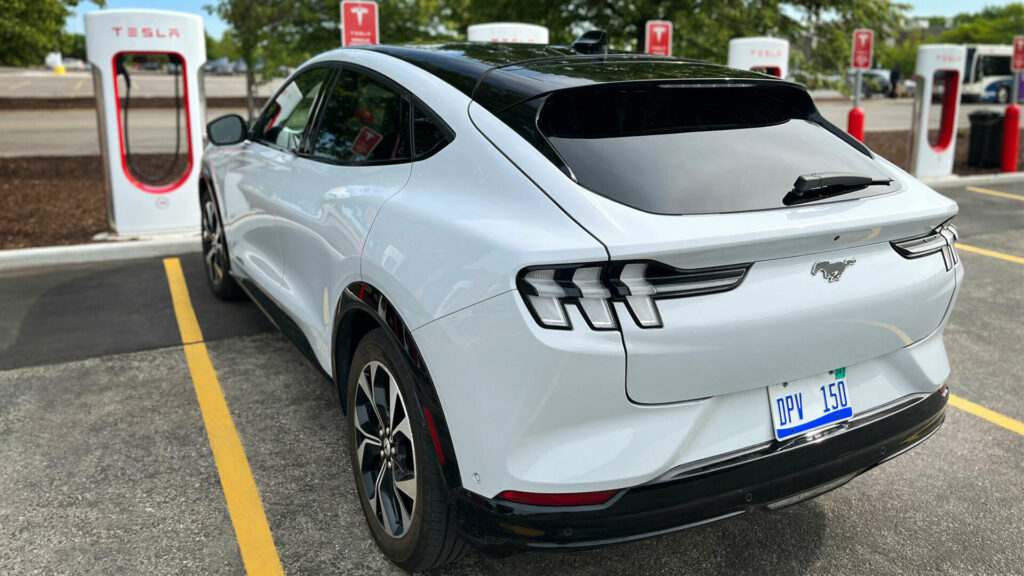
The rollout of some automakers’ own adapters has reportedly been slow because those brands have needed Tesla’s assistance to create the hardware at a time when Tesla has slimmed down its Supercharger team. Ford became so frustrated with Tesla’s pace of development that it built its own adapter and offers the connectors free-of-charge to its EV buyers. GM on the other hand is charging $225 and insists drivers initiate and pay for charging using its own app.
There’s one group of drivers who are quite happy about Tesla’s tardiness in making its charging network available to other brands, and its Tesla owners. Their satisfaction with charging experiences has dropped since other brands gained some access to their turf, and that’s only going to get worse when NACS goes mainstream in 2025.




